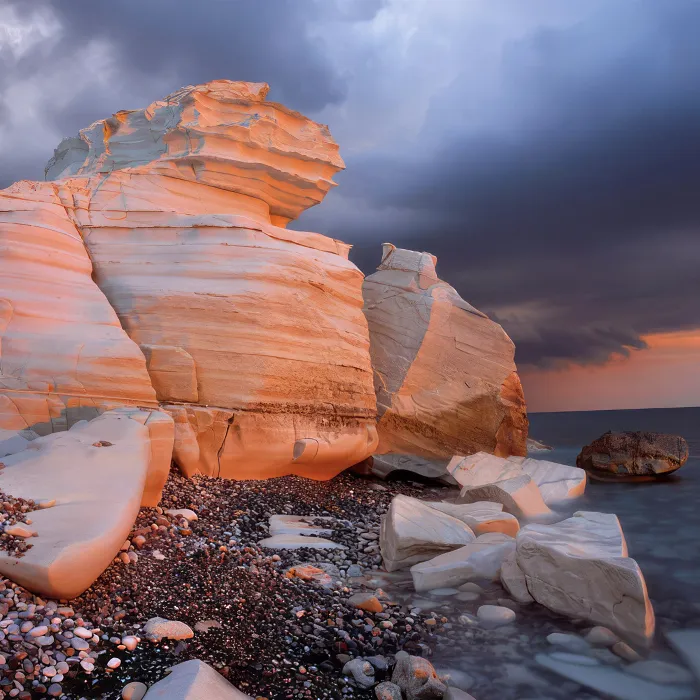My nerves had been on edge for days. A few clients were putting pressure on me. They really wanted to bring forward productions because they were "surprised" by the summer. It, the summer, just came along this year too, seemingly unexpectedly for some, not to mention completely unexpected and unplannable. And then there was the upcoming outdoor trade fair in Friedrichshafen. Catalogs, banners, printing deadlines, just the normal madness. Between the fronts: the mountain and outdoor photographers. But the weather reports were unsatisfactory, nothing was happening and I was on pins and needles. In the end, however, it was my wife's request to "put another shelf on the wall, please" that broke the camel's back. I had to go out, preferably to the Karwendel, without an assignment, without a destination, just for myself, to photograph flowers. Of course, not without lovingly screwing the shelf to the wall first ...
The next morning I was out and about in the Rohntal valley with a large photo backpack. I have loved this little corner of the world since my youth. A wide basin, dominated by the mighty north faces of the Östliche Karwendelspitze and Vogelkarspitze. In the middle of it are two beautiful alpine pastures and thousands upon thousands of Blum all around.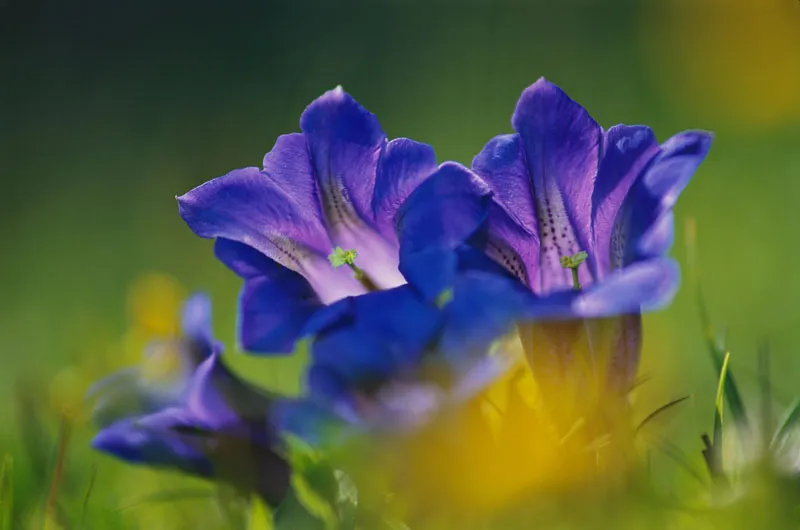
The gentian from the Rohntal. Photographed with the 100 mm macro lens (Zeiss f2.8 100 mm macro, Contax RTS III) and brightened with a small brightener (gold/silver zebra). In the foreground I deliberately left a yellow Blum in the blurred area to set a color accent. Karwendel mountains, Austria.
A sea of spring, a hint of the end of the world, my personal reincarnation as a mountain and nature photographer. After the third gentian motif, I had forgotten all the appointments, all the customers, the false weather reports, the whole daily "Schmarrn" (as the Bavarians say). For a few hours at least, I immersed myself in the close-up.
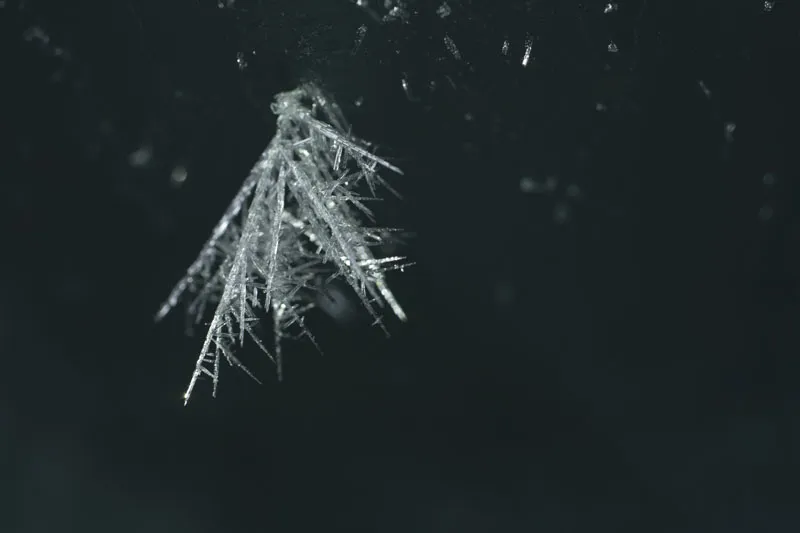
I photographed these delicate crystals at a depth of around 50 meters in Vernagtferner. The image section is approx. 4 x 6 centimeters in size. Due to the total darkness deep in this glacier, I illuminated them with two LED lights. Canon EOS 5D, Zeiss f3.5-4.5 28-70 mm with extension ring. Ötztal Alps, Austria.
How close is close, how close is good?
"If a picture isn't good, you weren't close enough" - Robert Capa once said. In modern mountain and outdoor photography, this sentence applies more than ever. At close range, completely new and varied possibilities open up to us. It's not just about the usual flowers and details in nature, but also about sport and action in the mountains. Whether rope, crampons or compass, anything that illustrates activity or visualizes and thematizes the action for the viewer is welcome as a foreground or main motif. Of course, the close-ups automatically bring things and people back into focus.
Another major advantage of the close-up range is its independence from "good light". Blums or crampons, ice crystals or carabiners - we can photograph these things, at least in theory, in any light and in any weather. On the contrary: in fine weather, i.e. blue skies and direct, strong sunlight, the contrasts are often too great for creative close-ups. The details in particular are often much more impressive and expressive in uniform light, i.e. an overcast sky, but also in dramatic weather. They become more expressive precisely because there is no distracting beautiful light or dominant dream mountain.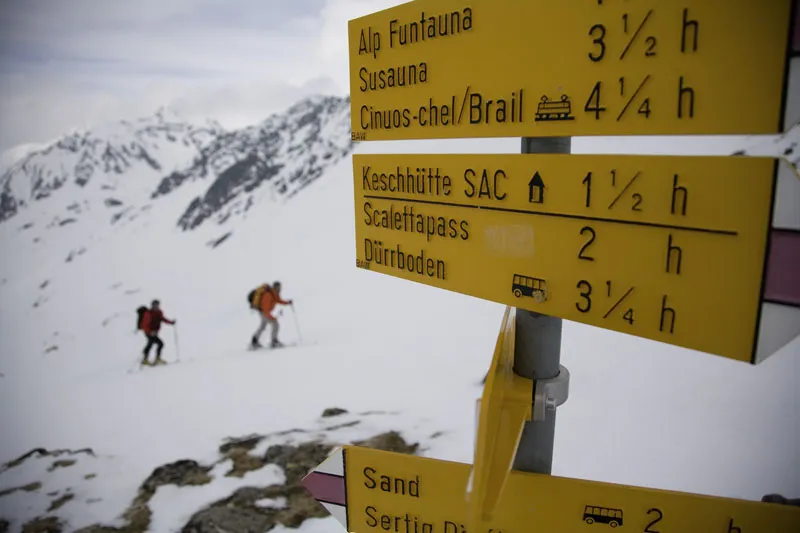
Bad weather, bad light, so the yellow signposts were just what I needed to bring some life and color into the picture. Canon EOS 5D, EF f4 24-105 mm L IS, ascent to Piz Kesch, Albula Alps, Switzerland.
Which accessories make sense?
This essential question is inevitably accompanied by a second question: How close do we want or need to get to our subject? Until the 1980s, the closest focusing distance of most lenses could be roughly derived from their focal length. With a 100 mm telephoto lens, for example, you could focus to about one meter, with a 50 mm lens to about 50 centimeters and so on. An A4-sized sheet of paper or a face could be photographed to fill the entire format.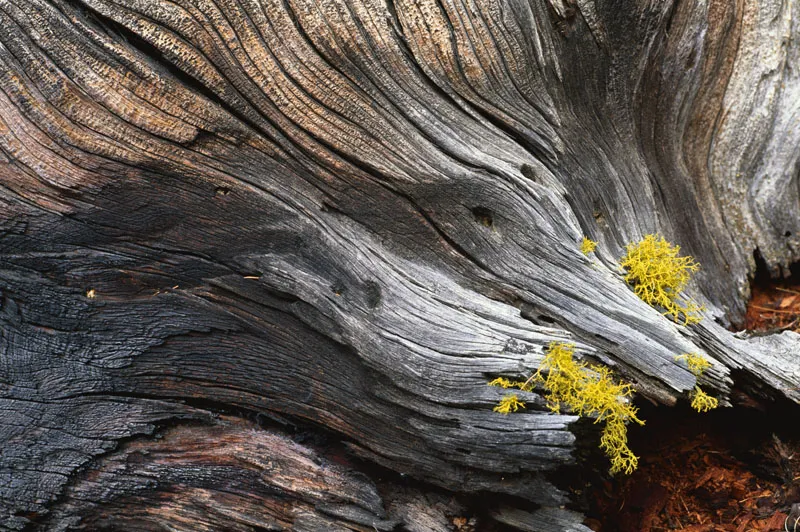
This approx. 40 x 60 centimeter section of an old tree should be possible to photograph with any lens without special accessories. Contax RTS III, Zeiss f3.5-4.5 28-70 mm, Munt Baselgia, Swiss National Park, Switzerland.
If you wanted to get closer, you either had to put an extension ring between the camera and lens (= pure extension without glass) or screw a so-called close-up lens into the filter thread of the lens to get closer to your subject (this should be as high-quality as possible, e.g. the 500 D from Canon). Both options are "affordable" (approx. €50 to €150) and are still very suitable for mountain or outdoor use as they are small and light.
Depending on the thickness (intermediate ring) or power (close-up lens), we can photograph even the smallest details in full format. In my opinion, the intermediate ring is even more flexible, as it can be used with all lenses. The close-up lens, however, can only be used on lenses with the same filter diameter (can be extended to a limited extent using a reduction ring). I would recommend light to medium telephoto lenses.
At the other extreme are the pure macro lenses. They are built and offered as standard in focal lengths of 50 mm, 100 mm and 180 mm. They are not only significantly larger and heavier than comparable fixed focal lengths, but also significantly more expensive. Prices between 500 and 1000 euros are the norm. Their advantage is an enormously short focusing distance, which makes it possible to photograph subjects up to a reproduction scale of 1:1, i.e. 24x36 mm (in relation to film or full-frame sensors), filling the format and without any additional accessories.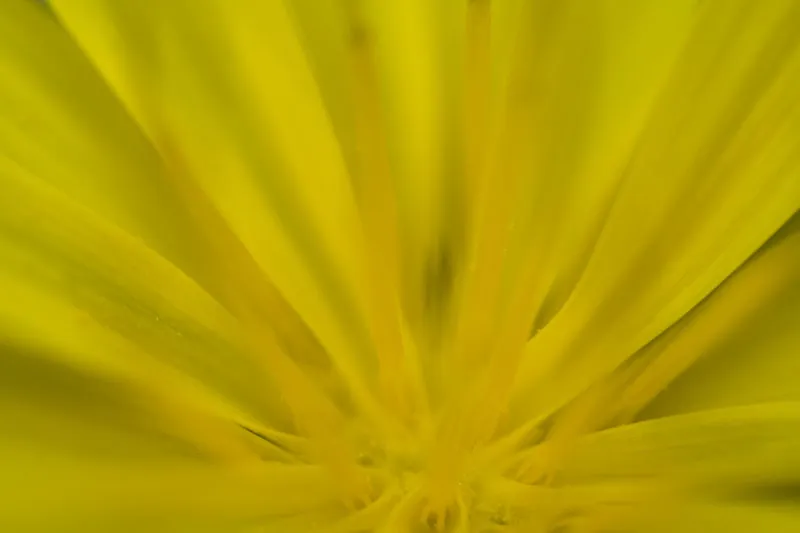
For this extreme detail of a dandelion, even the close focusing distance of the 100 mm macro lens was not sufficient; I used the Canon MP-E 65 mm magnifying lens on the Canon EOS 5D to make this small section of only approx. 12 x 18 mm possible. Belluno Dolomites National Park, Italy.
But with the rapid development in lens construction, the closest focusing distance of all lenses has become significantly shorter. With the latest zoom lenses in particular, we can get very close to our subject. A few points of reference: For a telephoto zoom with a focal length of 70-200 mm, for example, a closest focusing distance of one meter is very good and quite suitable for the close-up range. For standard zooms, such as a 24-105 mm lens, it should be 0.5 meters. In both cases, it is very good for the longest focal length (telephoto), but moderate for the shortest. For comparison: A good wide-angle fixed focal length with 24 mm can be focused up to 20 centimetres, which means that we can get much closer to our subject with it than with the zoom mentioned - at the same focal length, mind you!!! My approach is as follows: On pure macro tours (see Karwendel above) I also take the 100 mm macro lens with me, on all other tours I have an extension ring and close-up lens in my rucksack. A small flash including an unleashing cable is helpful for partially brightening up the foreground.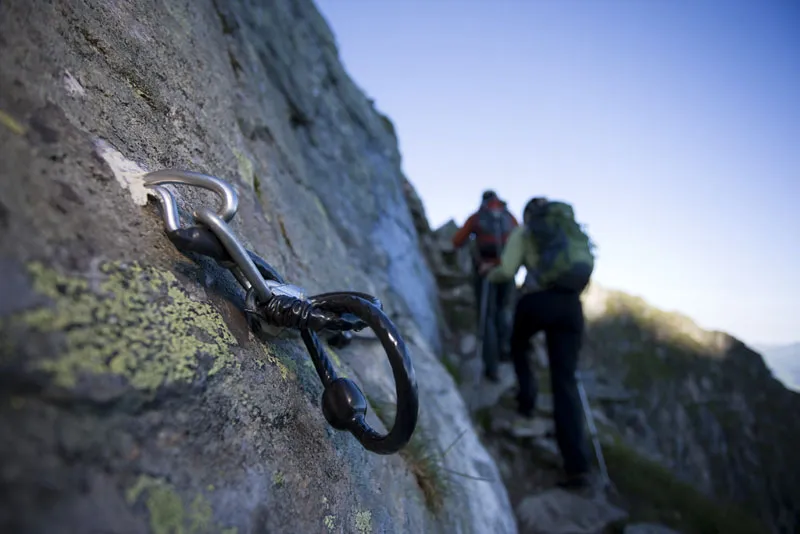
A via ferrata detail on the Aschaffenburger-Höhenweg, photographed with a wide-angle zoom with a focal length of 17 mm at Blender 4 to leave the background out of focus. Zillertal Alps, Austria. Canon EOS 1Ds MK III, EF f4 17-40 mm L.
I only aimed the weak flash at the foreground. Is this picture really interesting? I don't know. It was taken as part of a reportage for a magazine that always wants "lots and lots of close-ups".
Alternatively, a strong power LED headlamp (= daylight!!). It works wonderfully for brightening up, but preferably for static subjects (Blums) and when photographing with a tripod.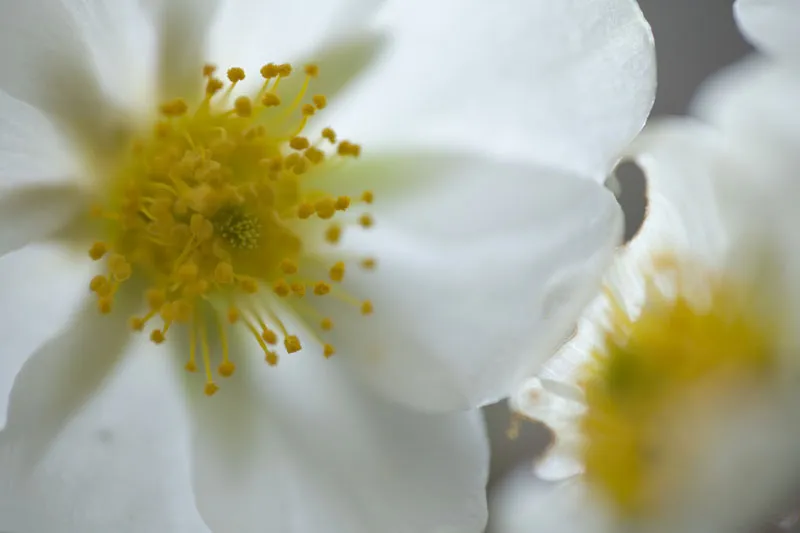
Two cropped silverroot flowers under a heavily overcast sky. The "sunny" image impression was created by the LED lamp used as backlight. Canon EOS 5D, Zeiss f2.8 100 mm macro with extension ring, Belluno Dolomites National Park, Italy.
You can also use a small, foldable brightener to achieve very targeted and controlled lighting, especially in sunlight. A stable tripod, preferably with a reversible center column to get as low as possible, is an absolute must for macro photography. A variable leg stop to be able to spread the tripod legs high even in rough terrain is very helpful.
What options do we have?
The classic macro range is both a standard and a challenge. When it comes to Blums and many other details in nature, literally nothing runs away from us (apart from spring and small animals).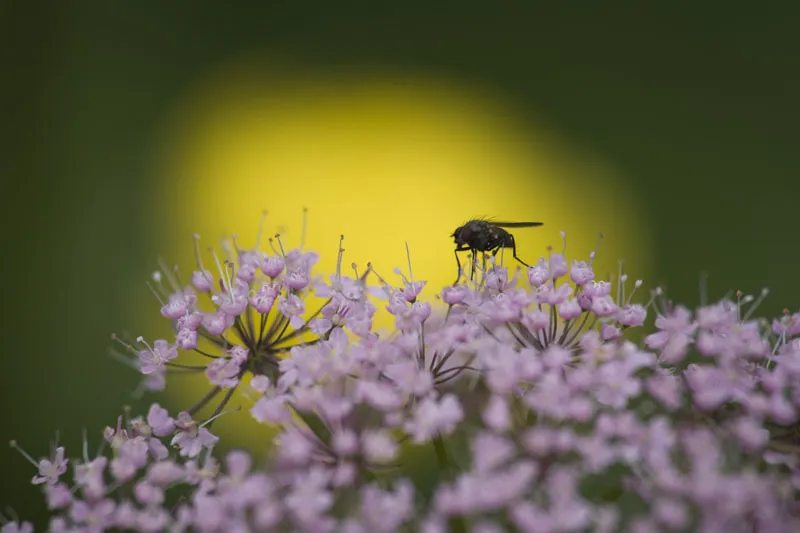
Luck is "when preparation meets opportunity". The picture was ready, I had already taken a few shots when this fly sat down in the perfect spot for about 2 seconds. I just had to release the shutter. Canon EOS 5D, Zeiss f4-5.6 100-300 mm with Canon 500D close-up lens, Gesäuse National Park, Austria.
We have and need endless time - if only we take it! You can spend an hour lying in the meadow for a good picture. If you walk into the mountains with a 100 mm macro lens, for example, you can discover an infinite number of motifs. As already mentioned, a tripod is recommended for close-up shots in nature, if possible with a reversible center column, so that you can still take pictures close to the ground.
It's not just about not blurring the shot (we could simply increase the ISO sensitivity of modern cameras to infinity), I'm also interested in getting the picture accurate to the millimetre. Out in nature is where my creativity takes place and a perfect image composition is simply part of it, despite all the possibilities in Photoshop!!! Which painter cuts his oil painting on canvas after completion just because there are scissors?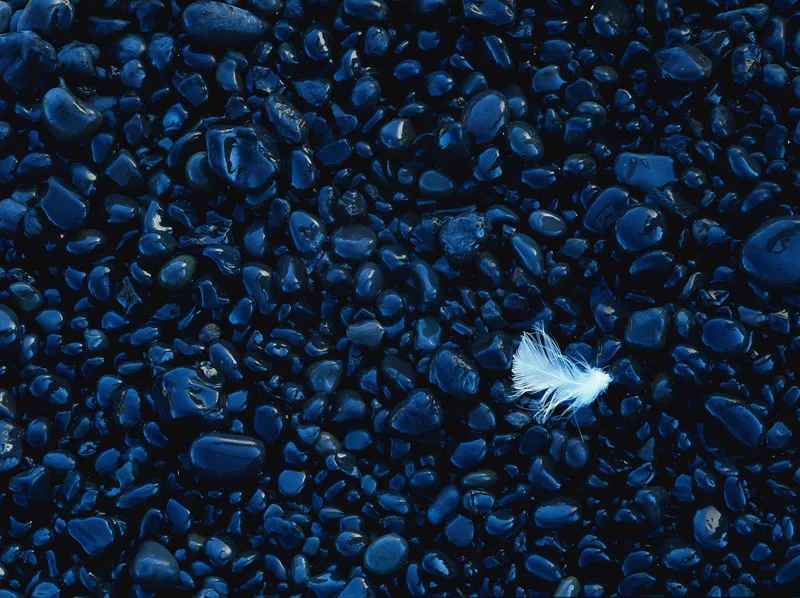
Contrasts could hardly be greater. Fortunately, the subject was in the shade. I could, of course, crop everywhere here, use cut-outs, portrait format, square, etc., but why? Contax 645, 80 mm lens with extension ring. Londrangar, Iceland.
The cropped details of an overall scene can be realized faster, more spontaneously and without a tripod. Here I usually only focus on one (important, beautiful or crazy) detail and everything else is blurred.
Skewed, oblique, cropped, people out of focus. Why not? If you like it. Thanks to the strong wide angle (17 mm), the two girls are still easily recognizable despite the open Blender (f 4) - no more and no less. Canon EOS 1Ds MK III, EF f4 17-40 mm L, Ziegspitz, Bavarian Alps, Germany.
Of course, I can also reverse this image style: Instead of the foreground, I then place the focus on the background. In this case, the blurred foreground leads me into the picture in a soft and abstract way.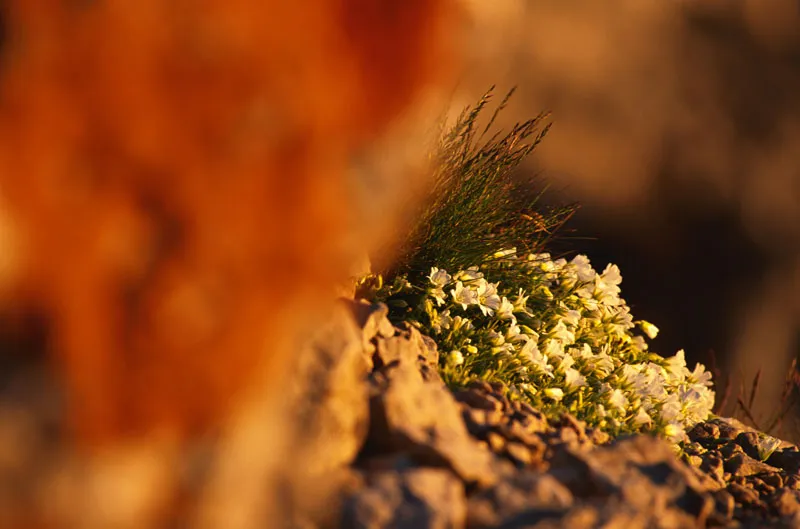
In this shot, the blurred areas in the foreground are relatively large. However, I find them pleasant due to the vivid, warm color of the lichen. The degree of depth of field is really a matter of taste and should be controlled with the stop-down button for images of this type. Contax RTS III, Zeiss f4-5.6 100-300 mm, Hoher Göll, Berchtesgaden Alps, Germany.
By extremely stopping down, i.e. closing the Blender to 22 or even 32, you can combine both image styles and thus achieve shots with a depth of field that extends from the near foreground to the background. But be careful, the principle of "less is more" applies here in particular. Otherwise, this type of image will very quickly appear restless and overloaded. They also exceed the optical limits of most lenses. Due to the so-called diffraction blur, the maximum sharpness decreases again at these aperture values.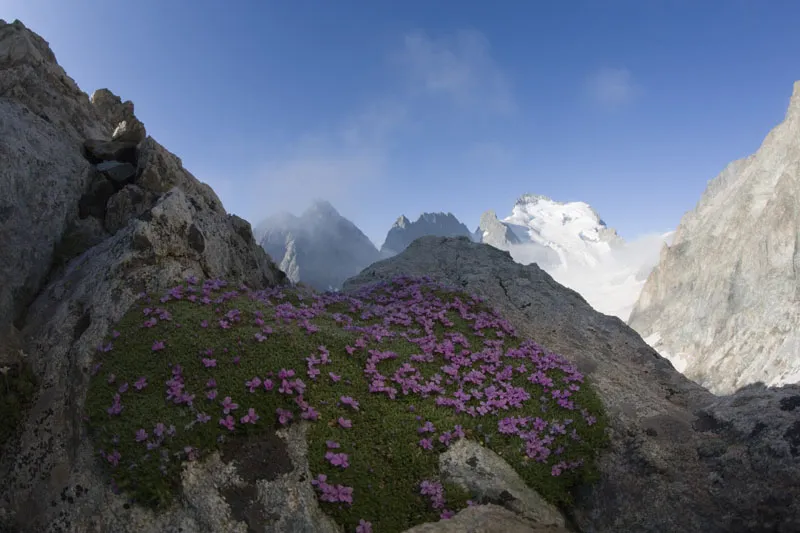
The first flowers in the foreground were only about 5 centimeters away from the front lens of the 15 mm full-frame fisheye lens. Stopped down to 22, the depth of field extended just sufficiently to the horizon. Canon EOS 5D, EF f2.8 15 mm, Barre des Ecrins, Dauphine, France.
The approach and technique
Shooting with a tripod:
Once I have discovered a subject (often after a long search at close range), I first circle it, look at it from all sides and only finally set up the tripod in the appropriate place. Then I choose the focal length and compose the picture. Then I take a test image to check the exposure and press the stop-down button to determine or check the depth of field.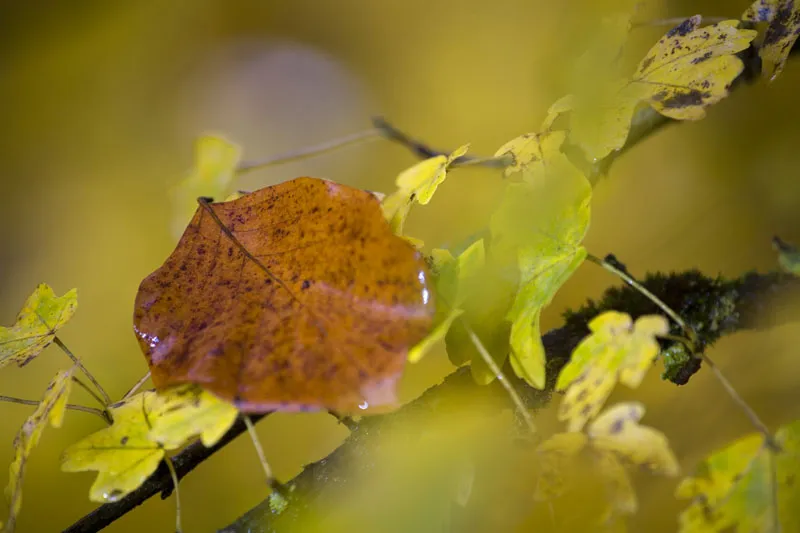
Where to put the sharpness? I often find it difficult to decide with this type of subject. Canon EOS 5D, Zeiss f4-5.6 100-300 mm with Canon 500D close-up lens. Kalkalpen National Park, Austria.
Incidentally, I almost always do without autofocus in the macro range. On the one hand, I don't want to keep changing AF points back and forth, and on the other hand, Live View is a brilliant help when it comes to pinpoint fine focusing via the monitor. Finally comes the actual image: with the mirror lock-up activated (to avoid any vibrations caused by the mirror impact), I release the shutter using the self-timer with a lead time of two seconds. Whenever possible, I work with ISO 50 or ISO 100 for static subjects, only with "moving" objects (Blum in the wind) I go up to ISO 800 to achieve a faster shutter speed.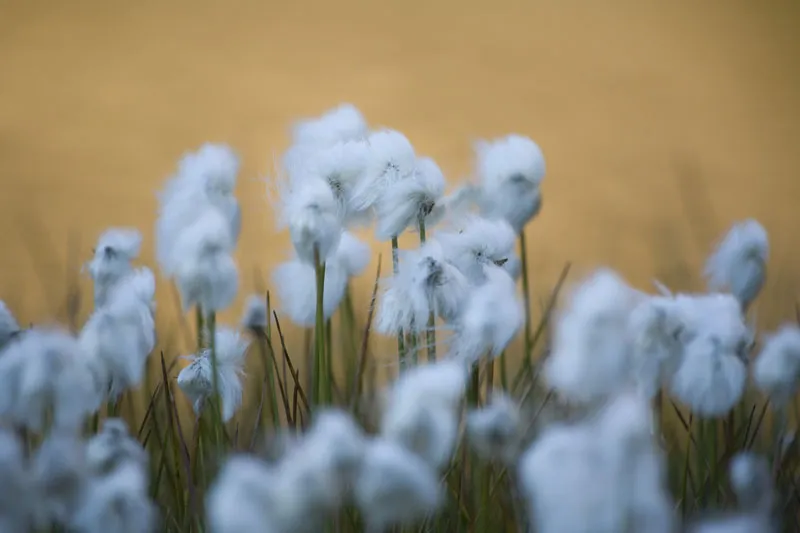
Thanks to ISO 400, I was able to freeze the cotton grass moving slightly in the wind at 1/250 of a second. A rock face shone by the warm morning sun was reflected in the lake, giving me the unusual color background. Canon EOS 5D, Zeiss f4-5.6 100-300 mm. Lago Leita, Gran Paradiso National Park, Italy.
Well, and when all the Blums are happily swaying in the wind, I look for alternatives that are interesting in terms of color or shape and structure.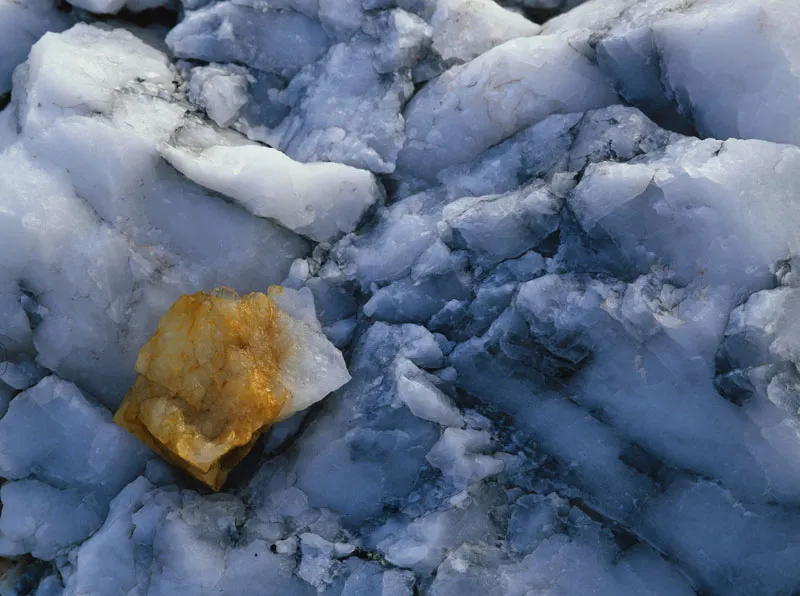
Contax 645, 80 mm lens with extension ring. Quartz crystals at Schwarzsee, Hohe Tauern, Austria.
I always use higher ISO values for close-ups in the sports action sector, as I almost always work without a tripod. Photography here is more spontaneous, faster and often more improvised than in nature photography. I approach my subject through the camera's viewfinder, see how close I can get (limited by the close-up limit of the lens) and at the same time look at the background and the overall composition. It is often a "gut decision" as to whether I should only focus on the foreground or extend the depth of field towards the background by stopping down.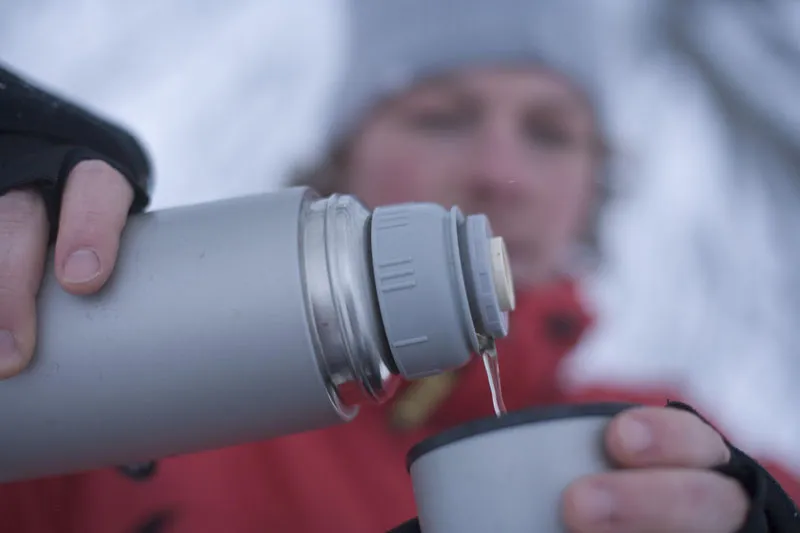
We don't always have to focus on the "expected". What is really important in the picture? This is where freedom and creativity begin.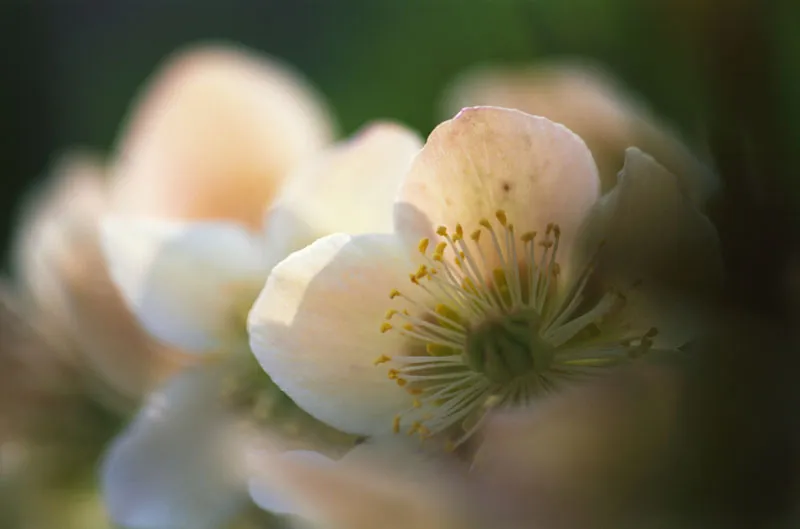
Canon EOS 5D, EF f1.4 50 mm. At the Stein, Zillertal Alps, Austria.
I really enjoy "seeing" images through the viewfinder. The close-up range really is a photographic journey of discovery and is definitely better than hanging up shelves.
My final tip: go to the Karwendel and lie down in a meadow of flowers before the ceiling (or a shelf) falls on your head ...
Have fun up close!
